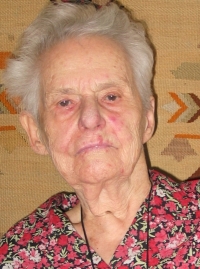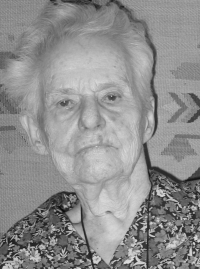They loaded us into the vermineux cattle-truck

Stáhnout obrázek
She was born on 1April, 1908 in Kuźmicze (Belarus, Minsk district). She had a brother and a sister (born in 1910+1913 respectively). Her mother‘s family came from Kaukaz. Her father‘s family was from the north-east of Poland. Olga Szerauc‘s parents met in Tyflis where her father completed school. They settled in an estate on Kresy. In 1915 her father was called up to serve in The White Guards so Olga Szerauc, along with her siblings was evacuated to the place called Wieliż in Russia. After a year her mother got a job as a secretary in the headquarters. The forces were moving around the whole of Russia by train. Thus Olga Szerauc with her mum, brother and sisters, were traveling together with them. In 1918 they reached Persia ( the town Szachtachty). Olga Szerauc‘s father was found there. His forces were deployed in Novosibirsk. Afterwards, Olga Szeracu, her mother and other military families were evacuated again, this time by the English. After one month‘s journey, they reached Constantinople and were put into an Italian refugee camp. Then they were moved to Tuzli and then to the English camp that was situated on the island of the Sea of Marmara. After the camps evacuation, Olga Szerauc and her mother were supposed to travel to Alexandria but her mother decided to came back to Poland to find the father of the family, who was in Poland already. While Olga Szerauc and her mother were kept in the English camp the English citoizenship was given to them. Because of the English citizenship, they weren‘t allowed to come back to Poland. To get polish citizenship back, Olga Szerauc and her mother went to Galati in Romania. They managed to return to Poland after two years. In the meantime Olga Szerauc‘s father was taking part in the the Polish-Soviets War (1919 -1921) under Józef Pilsudski‘s command. In 1921, after passing Lviv, Olga Szerauc and her mother reached Vilnius. Olga Szeraus attended for sewing courses in Vilnius at first, then in 1924 she began proper education in a primary school led by nuns. Afterwards she changed the school for one that was run by Countess Mohlówna. She completed school with an artistic weaver‘s craft specialisation. She got married to Leon Szerauc at the age of 26 and they settled on Polesie. Her husband worked in the forest inspectorate. She gave birth to her two children. In 1939, Olga Szerauc‘s husband was arrested. She hid with the kids in Vilnius until August 1939. Then she decided to come back home on Polesie and after three weeks she was arrested and deported to Kazakhstan. She was sentenced for five years of deportation. After a month‘s journey, she was put to the gulag and was forced to work in the gold mine called Stalino in Akmolno place. She escaped after two years to Makinka (100 kilometers away from the gold mine). She stayed four years there working in the boiler House. When the first transport to Poland was supposed to leave, Olga Szerauc escaped one more time. She managed to get into the train and finally reached Szczecin. She was given an post-German property so she settled down. Because she wasn‘t able to find a job, she searched for her cousin in Cracow where she finally decided to move. Olga Szerauc got a job in the embroidery factory, and shortly after she became a member of the group that organized the Folk Art Cooperative Society. She worked there over thirty years. She retired after sixty years of work. Olga Szerauc runs dentellier courses. She keeps on embroidering and stays in touch with the Folk Art Society. She still lives in Cracow.

